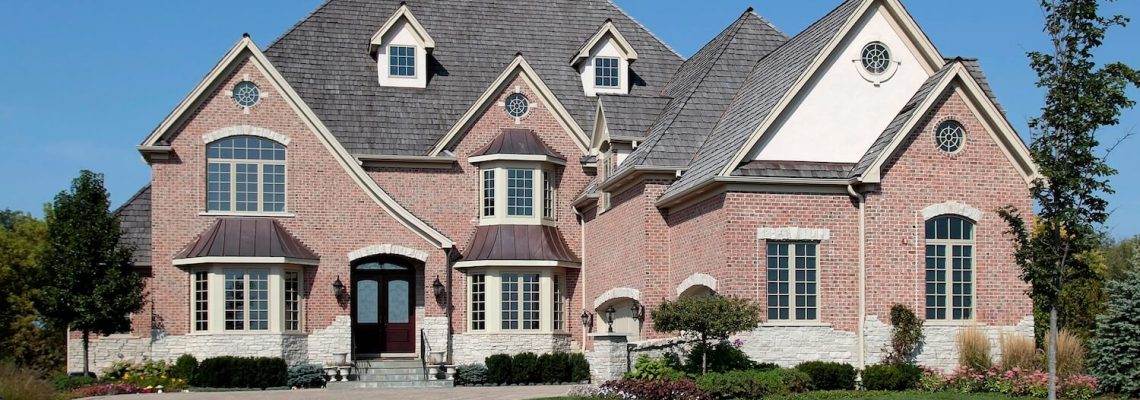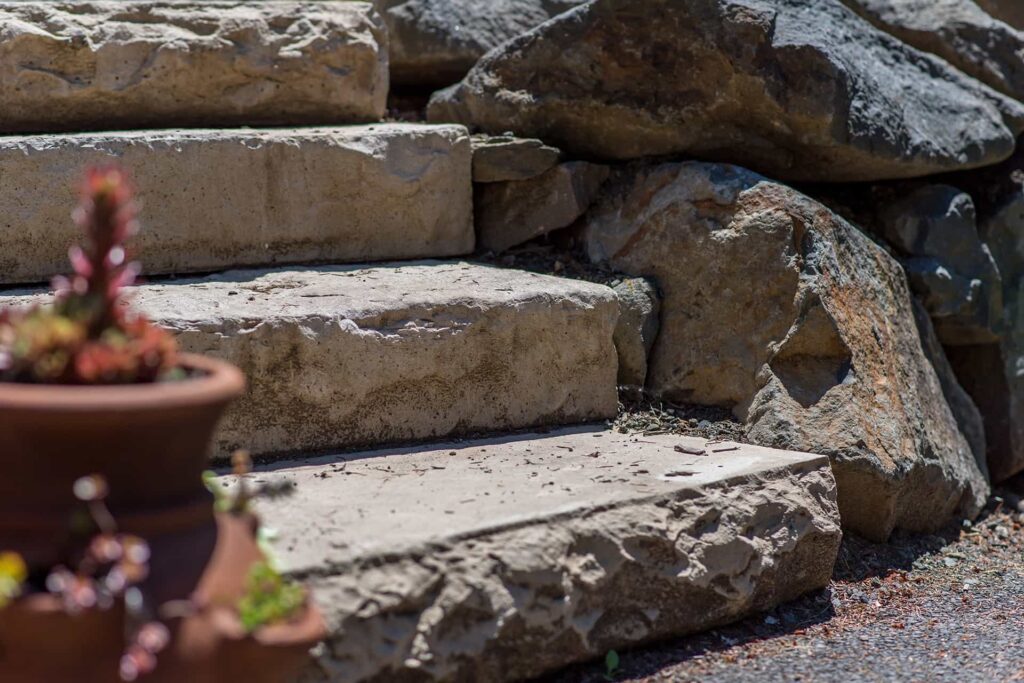The driveway is often the first impression guests have of your home. It’s not merely a pathway for your vehicles; it’s an essential element of your property’s curb appeal. A well-designed driveway can enhance the overall aesthetic of your home, increase its value, and provide a warm welcome to visitors. Among the various options available, paver driveways stand out for their versatility, durability, and timeless elegance.
In this guide, we’ll explore the art of designing the perfect paver driveway for your home.
1. Understanding Pavers
Pavers are individual units made from concrete, clay, or natural stone that interlock to create a durable surface. They come in a wide range of shapes, sizes, colors, and patterns, allowing for endless design possibilities. Whether you prefer a classic brick look, a contemporary concrete finish, or a rustic cobblestone appearance, there’s a paver style to suit every taste and architectural style.
2. Benefits of Paver Driveways
Durability
Paver driveways are known for their strength and longevity. Unlike poured concrete or asphalt, which can crack over time, pavers can withstand heavy loads and resist damage from freeze-thaw cycles.
Versatility
With a myriad of colors, shapes, and textures available, pavers offer unmatched versatility in design. You can create intricate patterns, borders, and accents to complement your home’s exterior and landscaping.
Easy Maintenance
Paver driveways are relatively low maintenance compared to other materials. Individual pavers can be replaced if damaged, and routine cleaning with a pressure washer keeps them looking fresh and new.
Permeability
Permeable pavers allow rainwater to infiltrate the surface, reducing runoff and preventing water pooling. This eco-friendly feature helps manage stormwater and can contribute to sustainable landscaping practices.
3. Design Considerations
When designing your paver driveway, several factors should be taken into account:
- Architecture and Style: Consider the architectural style of your home and choose pavers that complement its aesthetic. For a traditional look, opt for brick or cobblestone pavers, while modern homes may benefit from sleek concrete or porcelain pavers.
- Color Palette: Select paver colors that harmonize with your home’s exterior palette. Earth tones like beige, tan, and brown are timeless choices that blend well with a variety of architectural styles.
- Pattern and Layout: Experiment with different laying patterns to add visual interest to your driveway. Herringbone, basket weave, and running bond are popular options that can create a sense of movement and depth.
- Borders and Edging: Define the edges of your driveway with contrasting borders or edging stones. This helps to frame the space and create a polished, finished look.
- Lighting: Incorporating lighting along the edges or within the pavers can enhance safety and curb appeal, especially at night. Consider options such as LED pathway lights or recessed paver lights for a subtle yet impactful effect.
4. Installation Process
Proper installation is crucial for the longevity and performance of your paver driveway. Here’s a basic overview of the installation process:
- Excavation: The existing driveway surface is excavated to the required depth to accommodate the base layers and pavers. This ensures proper drainage and stability.
- Base Preparation: A sturdy base layer of crushed stone or gravel is compacted and leveled to provide a stable foundation for the pavers. This step is critical for preventing settling and maintaining the integrity of the driveway.
- Edge Restraints: Edge restraints, such as concrete or plastic paver edging, are installed along the perimeter of the driveway to keep the pavers in place and prevent shifting over time.
- Sand Bedding: A layer of bedding sand is spread over the base material to create a smooth, level surface for laying the pavers. This allows for minor adjustments and ensures uniformity in the finished driveway.
- Paver Installation: The pavers are carefully laid in the desired pattern, taking care to maintain consistent spacing and alignment. Specialized tools may be used to cut pavers to size and shape as needed.
- Joint Sanding: Once all the pavers are in place, joint sand is swept into the gaps between them to stabilize the surface and prevent weed growth. Excess sand is then removed, and the driveway is compacted to set the pavers in place.
- Sealing: While not always necessary, sealing the pavers can enhance their color and protect against stains and weathering. Choose a high-quality paver sealer compatible with your chosen paver material for best results.
5. Maintenance Tips
To keep your paver driveway looking its best for years to come, follow these maintenance tips:
Regular Cleaning
Sweep or use a leaf blower to remove debris and leaves from the surface of the driveway. Periodically wash the pavers with a mild detergent and water to remove dirt and stains.
Weed Control
Keep weeds and grass from growing between the pavers by applying a commercial weed killer or pulling them by hand. Regularly inspect the joints and reapply joint sand as needed to prevent weed growth and maintain stability.
Sealing
Depending on the type of pavers and environmental factors, consider resealing your driveway every 2-5 years to protect against fading, staining, and moisture penetration.
Repair Damages
Address any cracks, chips, or loose pavers promptly to prevent further damage. Replace damaged pavers as needed and ensure proper compaction and joint sanding to maintain structural integrity.
Professional Inspection
Periodically have your paver driveway inspected by a professional to assess its condition and identify any maintenance or repair needs. Early detection and intervention can help prolong the life of your driveway and prevent costly repairs down the road.
5. Choosing the Right Paver Material
Selecting the appropriate paver material is essential for achieving the desired aesthetic and functionality of your driveway. Here are some popular options to consider:
- Concrete Pavers: Affordable and versatile, concrete pavers come in various shapes, sizes, and colors, making them suitable for a wide range of design styles. They offer excellent durability and can mimic the look of natural stone or brick at a fraction of the cost.
- Clay Pavers: Known for their rich color and timeless appeal, clay pavers add a touch of elegance to any driveway. They are highly durable and resistant to fading, making them an ideal choice for areas with high traffic and harsh weather conditions.
- Natural Stone Pavers: For a luxurious, upscale look, natural stone pavers are hard to beat. Options such as granite, limestone, and travertine offer unparalleled beauty and durability, though they tend to be more expensive than other materials.
- Porcelain Pavers: Porcelain pavers are gaining popularity for their modern aesthetic and exceptional durability. They are resistant to stains, scratches, and fading, making them ideal for high-traffic areas like driveways. Plus, their low water absorption rate makes them suitable for all climates.
Consider factors such as budget, maintenance requirements, and personal preference when choosing the right paver material for your driveway.
7. Environmental Considerations
In addition to aesthetics and functionality, it’s essential to consider the environmental impact of your driveway design. Permeable pavers, which allow water to seep through the surface and into the ground, can help reduce stormwater runoff and mitigate the risk of flooding and erosion. They also filter pollutants and recharge groundwater, contributing to overall environmental sustainability.
When designing your driveway, explore options for incorporating permeable pavers or other eco-friendly features such as rain gardens, bioswales, or permeable gravel beds. These solutions not only enhance the beauty and functionality of your driveway but also support environmental stewardship and conservation efforts.
8. Budgeting and Planning
Before embarking on your driveway project, it’s essential to establish a realistic budget and timeline. Consider factors such as materials, labor costs, permits, and any additional features or enhancements you wish to include. Obtain multiple quotes from reputable contractors and carefully review their proposals to ensure they align with your budget and expectations.
Create a detailed plan outlining the design, materials, dimensions, and installation process for your driveway. Consider consulting with a professional landscape designer or contractor to help refine your vision and navigate the complexities of the project.
9. Seeking Professional Guidance
While DIY installation may be tempting, hiring a professional contractor for your paver driveway project can save you time, money, and headaches in the long run. Experienced contractors have the knowledge, skills, and equipment necessary to ensure a successful installation and achieve superior results.
When selecting a contractor, research their credentials, portfolio, and customer reviews to ensure they have a track record of excellence and customer satisfaction. Request references and visit completed projects to assess the quality of their workmanship firsthand. Be sure to obtain a detailed contract outlining the scope of work, timeline, payment schedule, and warranty terms before commencing the project.
Conclusion
A well-designed paver driveway is more than just a functional necessity; it’s a statement of style and sophistication. By carefully selecting the right paver material, pattern, and layout, you can create a stunning entrance that enhances your home’s curb appeal and welcomes visitors with elegance and charm. With proper installation and maintenance, your paver driveway will continue to impress for years to come, adding value and beauty to your property for generations.
So, why settle for an ordinary driveway when you can step into elegance with a custom-designed paver masterpiece? Start envisioning your perfect driveway today and turn your home’s entrance into a true reflection of your personal style and refinement.


